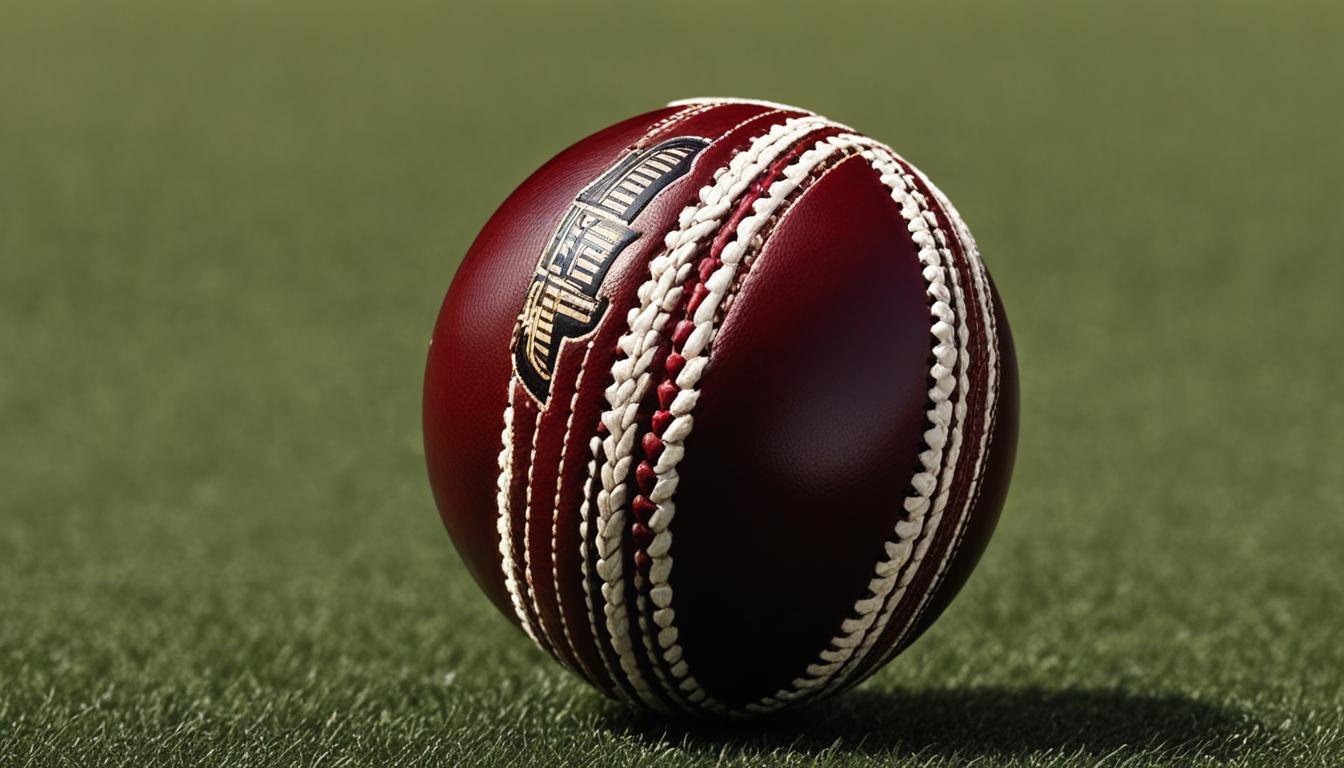As a cricket aficionado, I’ve witnessed firsthand the evolution that the Kookaburra cricket ball has brought to the game. Renowned for its superior craftsmanship, the Kookaburra is the pinnacle of performance amongst cricket gear. It has become the hallmark of quality, consistently delivering an unparalleled experience to cricket enthusiasts across the globe. A few years ago, the Board of Control for Cricket in India (BCCI) made a significant move by introducing the Kookaburra ball into the Duleep Trophy—India’s domestic cricket tournament. This decision marked a meaningful step toward equipping players with the finesse required for international circuits, where the Kookaburra is a common sight, albeit with exceptions like Test cricket in India and England.
The choice of the Kookaburra cricket ball sets a high bar, particularly due to its distinct flight and bounce characteristics. By offering domestic players the opportunity to practice with these balls, the BCCI aims to narrow the gap that Indian players frequently encounter on foreign pitches. It’s a strategic embrace of international standards, marrying tradition with innovation in the noble sport of cricket.
Key Takeaways
- The Kookaburra cricket ball signifies a benchmark in quality and consistency for cricket enthusiasts.
- The BCCI’s integration of the Kookaburra ball in domestic tournaments prepares players for the international stage.
- Superior craftsmanship ensures that the Kookaburra ball offers unique playing characteristics, distinct from other cricket balls.
- By practicing with the Kookaburra, cricketers hone their skills to perform optimally on a variety of pitches worldwide.
- India’s move to adopt the Kookaburra ball in domestic cricket reflects a proactive approach to align with global cricket standards.
- The Kookaburra cricket ball acts as a bridge, helping players adapt to the ball’s behavior in international games.
The Historical Switch to Kookaburra Balls in Indian Cricket
The advent of the Kookaburra cricket ball in Indian domestic cricket marked a significant transition that bore the potential to change the very fabric of how the game is played on home soil.
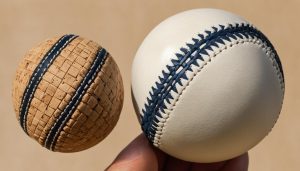
I vividly recall the dialogue around this shift, focusing predominantly on the anticipated adjustments players would have to make for the nuanced demands of international pitches and conditions. Let’s delve deeper into how this change impacted our players and juxtapose the characteristics of the Kookaburra ball with the traditionally used SG Test ball.
Understanding the Impact on Domestic Players
Indian cricket, with its rich tradition and fiercely competitive domestic structure, has historically conditioned its players to the SG Test ball’s behavior. The shift to the Kookaburra ball was a nod towards globalization and an acknowledgment of the facets of play outside our borders. As players took to the field gripping the Kookaburra, they encountered a cricket ball that behaved differently, especially as innings advanced, and were compelled to adapt strategically. This change required a recalibration of technique, prompting bowlers and batsmen alike to alter their approach to capitalize on, or withstand, the new dynamics of play.
Comparing the SG Test Ball and Kookaburra Ball
The SG Test ball and the Kookaburra cricket ball are akin to two skilled artisans of the same craft, distinct in their style yet masters in their own right. To visually encapsulate their differences, consider the following comparative analysis I outlined:
| Feature | SG Test Ball | Kookaburra Ball |
|---|---|---|
| Seam | Pronounced, enduring | Less prominent, diminishes quicker |
| Swing | Significant, aids swing bowlers | Reduced swing as the ball gets older |
| Grip | Better grip for spinners | Less grip, especially for finger spinners |
| Durability | More durable in Indian conditions | Wears out faster, which is challenging for domestic players |
| Impact on Technique | Encourages traditional seam and spin bowling | Demanding change in bowling and batting technique to suit its quicker wear |
The discourse surrounding the adoption of the Kookaburra cricket ball in Indian domestic cricket continues to thrive as it brings under its umbrella a confluence of tradition and modernity, challenging players to transcend their comfort zones. For cricket enthusiasts, it poses an intriguing narrative of transformative elegance and resilience.
Kookaburra Ball Handling Techniques for Optimal Performance
Mastering cricket ball handling is crucial for fast bowlers looking to maximize their performance on the pitch. As a swing bowler myself, I’ve learned that the seam position of a Kookaburra ball is integral to executing those game-changing deliveries. Unlike the SG ball, which keeps its seam intact longer, the Kookaburra’s seam tends to flatten, challenging bowlers to adjust their technique over the course of a match. Let’s delve into the essential handling tips for fast bowlers working with this unique cricket ball.
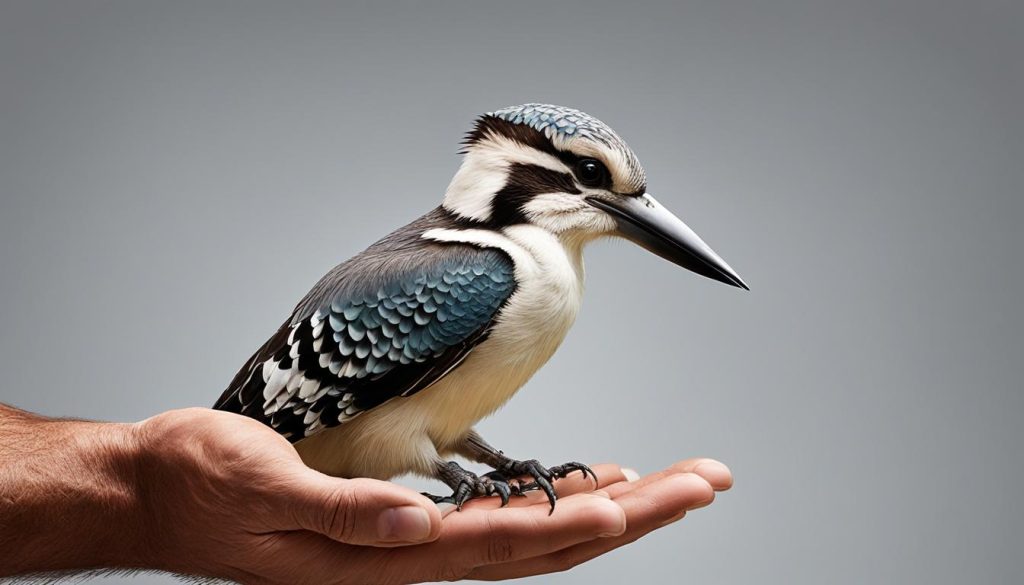
Adapting to the fading seam of the Kookaburra requires a specific approach, particularly for those of us who are traditional swing bowlers. We thrive on maintaining that pristine seam position for as long as possible to produce that magical swing. However, as the Kookaburra ages, I have to shift my strategy towards a ‘hit-the-deck’ technique to exploit any remaining lateral movement.
| Ball Type | Seam Maintenance | Swing Longevity |
|---|---|---|
| Kookaburra | Quick to flatten | Reduced as match progresses |
| SG Ball | Stays pronounced | Longer-lasting swing |
As fast bowlers, we must be responsive to these changes and anticipate how the ball will behave. The difference in handling the Kookaburra ultimately affects your entire bowling strategy, from the grip to the execution of the delivery. Here, the importance of practice cannot be overstated; it’s through repeated trials that I’ve honed my ability to manipulate the seam position effectively, even as it deteriorates.
Revolutionizing the Pakistan Cricket Sphere with the Kookaburra Ball
The recent shift by the Pakistan Cricket Board (PCB) towards the reintroduction of the Kookaburra cricket ball in domestic cricket signifies a crucial moment for the sport’s development in the country. My in-depth look into this transition reveals how the move is aimed at elevating the standards of domestic cricket to align with international play. As someone passionate about cricket’s evolution, I find the reasoning behind PCB’s decision rooted in the desire to enhance core aspects such as fielding, fitness, and technique, which are essential for players who aspire to compete on a global stage.
Not unfamiliar to transformation, domestic cricket in Pakistan underwent a major change in 2007 when the PCB shifted from the iconic Kookaburra to balls manufactured by the local brand, Grays. The objective then was to support local industry, but cricketers expressed reservations about the performance and durability of these balls. Hence, to honor the feedback from players and coaches, the Kookaburra ball has found its way back into the limelight, as I observed during recent matches, where its impact on the game’s quality was evident.
Domestic Challenges and the Transition Period
When documenting the current landscape, I see that embracing the Kookaburra ball has presented unique challenges for the PCB and domestic cricketers alike. The players are undergoing a period of adaptation, reacquainting themselves with the ball’s distinct characteristics and adjusting their techniques accordingly. This transition, though demanding, is a necessary step in preparing players for the international scene where the Kookaburra is widely used.
The Controversy Over Imported vs. Locally-Manufactured Balls
The PCB’s switch back to the Kookaburra has sparked a debate within the cricket community. Some, including influential figures like former PCB Chairman Ijaz Butt, question the economic implications and the wisdom of forsaking local products like those produced by Grays, in favor of imported gear. The heart of this contention lies not just in financial deliberations but also in a philosophical one: is the essence of cricket truly influenced by the tools or the talent of those who wield them?
Javed Miandad, a stalwart of Pakistan cricket and former PCB Director, famously stood against the prioritization of imported equipment, asserting that the quality of cricket stems from the players themselves.
As someone who appreciates the nuances of cricket, I recognize that the decision by the PCB is not made lightly. It reflects a holistic approach towards enhancing the competitive edge of Pakistan’s cricketers. It’s a narrative I’ve seen unfold in real-time, the balance between fostering homegrown industry and providing players with the best possible tools to succeed internationally.
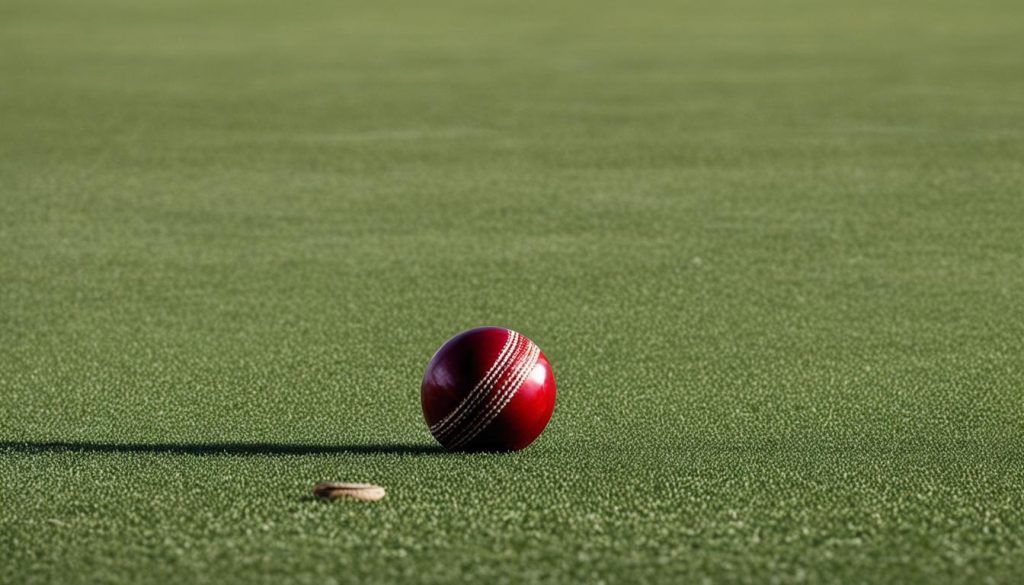
Forecasting the Cricket Equipment Market’s Growth
As a keen observer of the cricket landscape, I’ve witnessed remarkable growth within the cricket equipment market, and projections indicate a continued uptrend. Analysts estimate a CAGR of 3.28% from 2023 to 2028, a testament to the sport’s expanding influence. The infusion of technological advancements into the equipment — spearheaded by entities like Kookaburra Sport — is dramatically enhancing the analytical edge of players and officials.
The ICC Cricket World Cup and the vibrant IPL tournaments showcase the pinnacle of competition and innovation. These platforms not only command global viewership but also push the envelope in sports technology, including the use of the Decision Review System (DRS). Moreover, Kookaburra Sport’s Smart ball stands at the forefront of this revolution, featuring an integrated microchip that captures and relays valuable performance data, marking a bold step into cricket’s tech-oriented future.
Technological Advancements Leading the Wave
My engagement with the cricket community underscores the value of these developments. The Smart ball, for instance, is not just a marvel for the statisticians and analysts, it’s altering how coaches and players approach the game. Training becomes more focused, and the in-match strategic decisions become data-driven. This innovation is particularly crucial during marquee events such as the IPL, where split-second choices could be the difference between victory and defeat.
Addressing the Challenge of Insufficient Cricket Infrastructure
However, the burgeoning market and technological strides come with their own set of challenges. Several countries lag in providing sufficient cricket infrastructure; if unaddressed, this disparity could stymie the game’s grassroots development and market potential. Foresight and investment in facilities can nurture a new generation of cricketers and fanatics alike, ensuring cricket’s flame burns brighter with each passing season.
As we propagate the sport’s ethos, the commitment to growth via innovation, typified by the likes of the Kookaburra Sport’s Smart ball and enhanced match officiating tools, paves the way for a dynamic cricket equipment market. Innovation, after all, serves as the lifeblood of cricket’s evolving narrative, promising an exciting era of technological integration and market prosperity.
Insider’s Guide to Choosing the Right Kookaburra Ball
As a seasoned cricketer, I understand that cricket bat selection and choosing the right protective gears are crucial for any player. However, an aspect that’s often overlooked is the cricket ball quality. A top-notch Kookaburra cricket ball is essential for a balanced and fair game, whether it’s your casual weekend match or a serious competition.
There are certain parameters to consider when selecting the perfect Kookaburra ball, such as the ball seam and ball hardness. These factors greatly influence the ball’s performance on the pitch. Below, I’ve outlined a detailed comparison to help you make the best choice when it comes to picking the right Kookaburra ball for your game:
| Type of Match | Ball Color | Seam Characteristics | Hardness Level |
|---|---|---|---|
| Test Matches | Red | Prominent for prolonged periods | Firm |
| Limited-Overs | White | Less prominent but consistent | Standard hardness suitable for format |
Admittedly, the quality of a cricket ball can make or break a match. That’s why it’s imperative to choose a Kookaburra cricket ball that promises not only durability but also consistent performance that complies with the standards of the game.
Let’s not forget the significance of gearing up with the right protective gears. Safety is paramount in cricket, so ensure you’re fully equipped with helmets, pads, gloves, and guards to protect yourself during play. Kookaburra not only provides high-quality balls but also offers a range of protective gear that meets international standards.
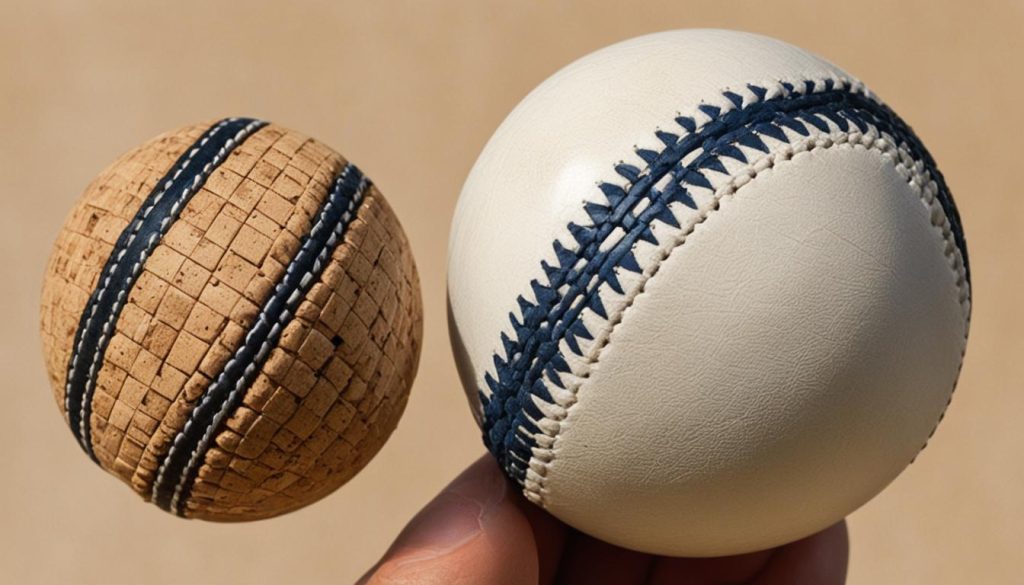
Conclusion
As I reflect on the profound impact that Kookaburra has made on cricket, it’s evident that the brand holds a distinct place in the global cricket equipment industry. The quality and performance of their products have not only met but exceeded international cricket standards, shaping the experience of players and fans alike. Kookaburra’s commitment to excellence has rightly earned it an indelible reputation on the playing fields, enhancing the game for cricket enthusiasts across continents.
An Overview of Kookaburra’s Global Impact on Cricket
From humble beginnings to becoming a household name in the sport, Kookaburra’s journey mirrors the evolution of cricket itself. Through its continuous emphasis on quality and refinement of craft, the brand has elevated player performance and, by extension, the very quality of play. Whether in the grip of a seasoned pro or the hands of an aspiring talent, Kookaburra’s gear is a testament to its commitment to the sport’s growth and its vital role in the enjoyment it brings to spectators around the world.
Embracing Quality and Innovation for the Future of Cricket
In the fast-paced world of sports technology, Kookaburra remains at the forefront, pioneering technological integration that promises to revolutionize how we engage with cricket. By staying dedicated to innovation and responding to the varying needs of the sport, Kookaburra is not just keeping pace but setting the bar high for what it means to produce top-tier cricket equipment. My outlook for the future of this sport is filled with optimism, especially as we continue to embrace the advancements brought forth by visionary leaders in cricket gear like Kookaburra.
FAQ
What sets the Kookaburra cricket ball apart in terms of quality and performance?
Kookaburra cricket balls are renowned for their pinnacle of performance and superior craftsmanship, making them the choice of cricket enthusiasts worldwide. They undergo rigorous quality checks and are designed to provide consistent playability, durability, and a polished finish, ensuring a top-tier cricketing experience.
Why did Indian cricket switch to using the Kookaburra ball in the Duleep Trophy?
Indian cricket introduced the Kookaburra ball in the Duleep Trophy to prepare domestic players for international conditions. The Kookaburra is widely used in international cricket, and the exposure to its unique playing characteristics was deemed crucial for bridging the gap faced by Indian players when touring overseas.
How do the SG Test ball and the Kookaburra ball differ in performance?
While both balls are similar in size and weight, they differ in seam construction and behavior during play. The SG Test ball, preferred in India, has a pronounced seam that aids both fast bowlers and spinners. Conversely, the Kookaburra ball’s seam quickly diminishes, impacting the swing for bowlers and grip for spinners as the game progresses.
What specific techniques should bowlers use when handling a Kookaburra cricket ball?
Bowlers need to adjust their release and maintain an upright seam position for as long as possible with the Kookaburra ball. As it ages, the tactic shifts to a ‘hit-the-deck’ approach to extract any latent movement since the Kookaburra’s seam doesn’t stay pronounced for long, affecting swing capacity.
What led to the reintroduction of the Kookaburra ball in Pakistan’s domestic cricket?
The reintroduction of the Kookaburra ball in Pakistan domestic cricket was motivated by player concerns over the quality of locally-manufactured balls and the need to align domestic cricket with international standards. The feedback pointed to an improvement in various areas, including fielding, fitness, and technique, leading to the decision to revert to Kookaburra balls.
What are the arguments for and against using imported cricket balls like Kookaburra in Pakistan?
Proponents argue that using imported Kookaburra cricket balls can enhance the quality of the game by meeting international standards. Critics like Javed Miandad believe in developing local manufacturing and argue that the essence of cricket lies in the prowess of the players, not the equipment, and raise concerns about the costs of importing balls.
How is the Kookaburra Sport’s Smart ball revolutionizing cricket equipment?
The Kookaburra Sport’s Smart ball is an example of technological innovation in cricket equipment. It is integrated with a microchip that provides real-time data to players and umpires, offering insights into performance metrics like speed, spin, and power, which elevates the game and aids better decision-making.
What challenges face the cricket equipment market, despite its growth?
Even with a positive forecast for growth and technological advancements, the cricket equipment market faces the challenge of inadequate cricket infrastructure in some regions. This limits the market’s potential expansion and the broader development of the sport in emerging cricket nations.
What should I consider when choosing a Kookaburra cricket ball for a match?
When selecting a Kookaburra ball for play, consider its type and color—red for Test matches and white for limited-overs formats. Look into the ball’s quality, seam characteristics, and hardness. These factors collectively influence the ball’s performance and the fairness of the game.
How is Kookaburra influencing the global cricket equipment market?
Kookaburra is at the forefront of the global cricket equipment market, driving innovation and maintaining high product quality. Its incorporation of cutting-edge technology and its reputation for reliable equipment continue to solidify its position as a leader in the industry.
Why is embracing quality and innovation important for the future of cricket?
The future of cricket relies on continuous improvements in quality and technological innovation in equipment to meet evolving plays, enhance player performance, and ensure the growth of the sport internationally. Kookaburra’s commitment to technological integration and superior product standards exemplifies this approach.

